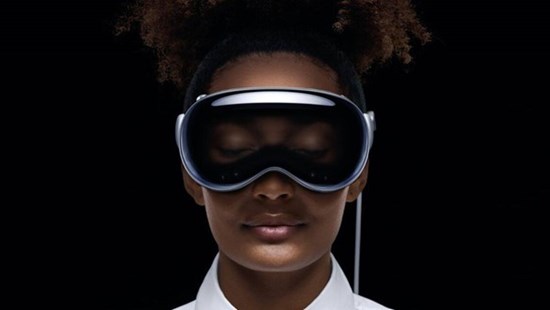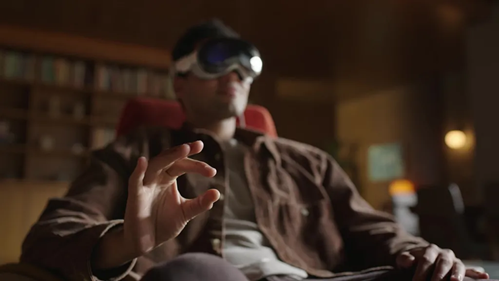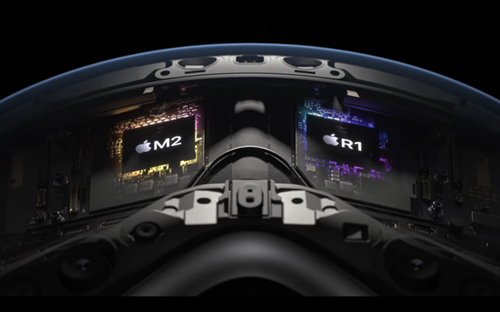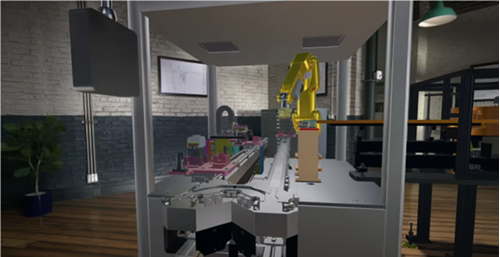
This week’s update is written by Sam Corbet, who is in our discretionary investment team.
Apple is a company that, as part of the Global Blue Chip team, I have been responsible for covering for a number of years. Recently, I must admit to having become slightly fatigued by Apple’s predictable upgrade cadence and yet another iteration of the same, familiar product which the company would excitedly declare its “best ever [insert product here]” - as if incremental product improvements were an attribute unique to them. The announcement unveiling the much-awaited Vision Pro (Apple’s first foray into the mixed reality headset market) was different.
I was intrigued. Eager to learn more. Unfortunately, my initial excitement was quickly replaced with disappointment as Apple unveiled a feature set most of which I had seen before. However, like any analyst worth their salt, I reserve the right to, unashamedly, change my mind – “when the facts change, I change my mind” as Keynes once quipped. Having watched/read numerous reviews from people who have had the opportunity to demo the Vision Pro (and the weekend to reflect on it) I want to fess up – my initial scepticism was wrong.
Whilst many of the concepts introduced were not new (virtualised workspaces, immersive experiences etc), what I had failed to grasp was that these concepts are not what sets Apple apart but rather the company’s superior ability to execute on them. When viewed through this lens, it’s immediately clear that the Vision Pro is a significant improvement on any mixed reality headset to have come before it.
Vision OS, the operating system underpinning the company’s latest product has a familiar look. People will be reluctant to move to a new form factor if they feel disadvantaged by doing so. Creating something that users intuitively know how to navigate (with limited additional education required) removes a significant barrier to the widespread adoption of this new “spatial computing” environment. As with each change in platform before it, Apple has developed a revolutionary new input model – a combination of vision tracking, voice, and subtle hand gestures. A common feature of the reviews was just how natural this mix proved – a far cry from the clunky joysticks offered by competitors.

Despite its appearance, the Vision Pro lens is not transparent. In fact, it’s not even a lens but rather a series of opaque displays. Two internally facing for the user and an external OLED screen which displays a real-time digital render of the users’ eyes – allowing expression to be conveyed when interacting with others in the physical world and better maintaining that feeling of human connection (ignoring the obvious intrusion of strapping a glorified ski goggle to your face).
Having read Matthew Ball’s The Metaverse last year we knew one of the biggest technical challenges that still required solving was rendering a subject’s surrounding environment in real-time. This presents less problems in a virtual environment (where much of the compute can be done ahead of time) but it is a far more prevalent issue when blending the physical and virtual worlds – where the rendering of your surroundings needs to be performed seamlessly, on-the-fly. A virtual dog can respond to an interaction in a pre-known, discrete, number of ways. Real pets are not bound by these same constraints and augmented reality (AR) headsets need to pass an infinite number of scenarios onto the user, in real-time, to prevent accidents (to you or the beloved pooch).
To deliver on this, the Vision Pro contains two processors: its leading M2 chip (variants of which power the Mac and Macbook lines), which is responsible for running operations and handling app demand, and a new R1 chip, dedicated to processing the inputs received from the headset’s array of sensors (in real time). Separating these feels right to me. The compute power required from operations is more dynamic and changes in response to user demands which means it’s more susceptible to spikes in workload, buggy code, and crashes. Processing the input from the numerous sensors critical to the user experience is, by contrast, more stable and narrowly defined. If widespread adoption of spatial computing is the ultimate destination, we will be wearing these devices for prolonged periods. Assuming operational independence between the two processors, I suspect users will be willing to tolerate the occasional app crashing provided this does not also result in their complete loss of vision - a similar experience to what one might tolerate from our current physical workstations.

I found it particularly interesting that tech reviewer, Marques Brownlee, was able to navigate his Apple Watch through the headset without any noticeable degradation to the watch display. The pixels on screen continually cycle from on to off and this presents its own rendering obstacles. As he highlights in his review video, seeing how the headset is able to pass through images from a TV or monitor will certainly be an interesting test for benchmarking how good this chip is.
Let’s get to the elephant in the room – the price. At $3,500 the Vision Pro is (if not unattainable) certainly undesirable for the vast majority of Apple’s consumer-centric customer base. As with most new technologies, we expect the price to come down over time. That said, I am cognisant of something Elon Musk said during Tesla’s recent AGM Q&A where he revealed that he expects fully autonomous driving to increase the utility of a vehicle by at least five times. I can’t help but wonder if a similar argument cannot be made here. As the number of features and use cases becomes more apparent, consumer utility will increase. Housed within a drastically reduced (and less cumbersome) form factor, it’s not hard to imagine future generations of the Vision category making numerous other devices redundant – who needs to spend thousands on a phone, a laptop, monitors, or cinema sized TVs when these can all be simulated within one, readily accessible device?
On that point, the one question I keep returning to is this: could the Vision category be to Apple’s other products what the iPhone eventually became to the iPod? Does spatial computing (where more hardware becomes virtualised) further Apple’s transition to a service-led business and does this mean the Vision platform is the last hardware product the Company ever needs to produce? What does this mean for Apple’s future revenues and margins, as sales of its other devices are usurped, and its customers transition to one Apple product gatekeeping an abundance of services from payments and other financial services to gaming, and even home entertainment?
These are tricky questions and whilst it is interesting to speculate, the ability to answer these with a reasonable degree of certainty is limited. Investors may recall we exited our position in Apple over concerns regarding the sustainability of the margins associated with its services business and what we perceived as a significant risk to the value investors ascribe to the business. We believe this threat remains and Apple’s push into this new paradigm of computing adds additional uncertainty. Unfortunately for us this positions Apple firmly in the “too expensive” camp as there is insufficient margin of safety to compensate us for all the additional unknowns this new product has now introduced to Apple’s business model – although we acknowledge the opportunity for Apple to establish a foothold in this next battleground could prove a defining moment for the business.
Thankfully, it isn’t necessary to make bold bets with binary outcomes to generate attractive returns for investors. Whilst we believe it is still too early to tell if Apple’s vision for the future will be the one that persists, we feel there are beneficiaries of this general direction of travel that are easier to assess. An example of one such company (which played a cameo in the Vision Pro announcement) is a relatively new introduction to the Global Blue Chip Strategy – CAD and product lifecycle management company PTC.

The segment was brief, but hearing from developers with early access to Vision OS helps visualise the tasks that are going to be possible using mixed reality. In PTC’s case, we were able to review and approve a new production line, in situ, before manufacturing had begun. AR enhances the value proposition software offers – it’s far easier to understand the potential benefits this facilitates to vendors like PTC without also having to contend with the risks posed by the cannibalisation of an existing (and highly profitable) hardware division. As investors, it remains important for us to remain cognisant of developments to the technology available but we do not necessarily have to invest directly in the driving forces behind the change in order for our clients to benefit.
We wish you a good week.
FINANCIAL PROMOTION: The value of investments and the income derived from them may go down as well as up and you may not receive back all the money which you invested. Any information relating to past performance of an investment service is not a guide to future performance.
Any mention of individual stocks are with reference to our management of the Global Equity Blue Chip Fund, are based on our own proprietary views and are not a recommendation to investors.

